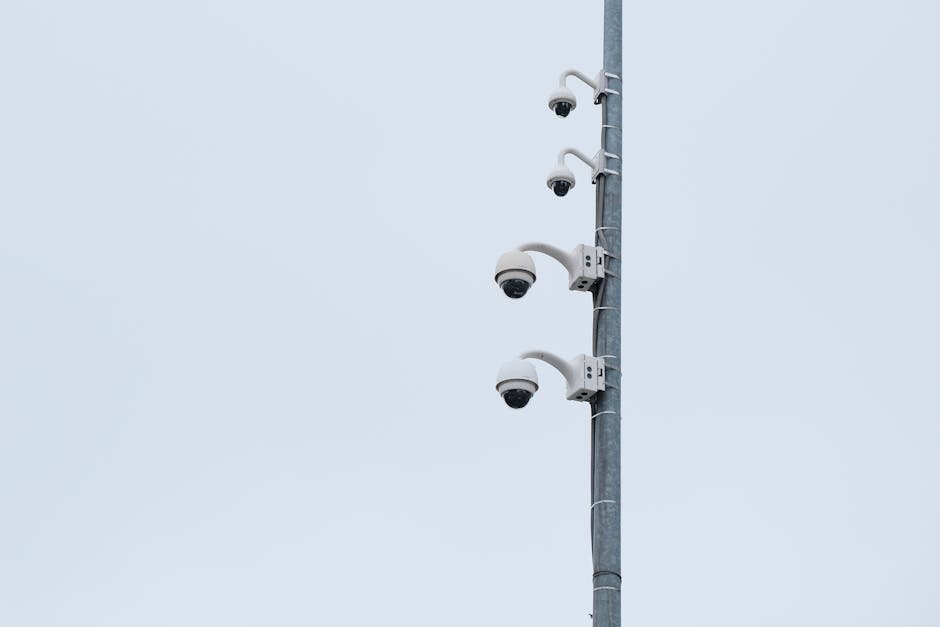Why Migrate Contracts With These Proven Strategies?
In today’s rapidly evolving digital landscape, the migration of smart contracts is a critical process that demands careful consideration and thorough planning. With the increasing complexity and interconnectedness of blockchain systems, the need for proven strategies for contract migration has never been more apparent.
By employing a systematic approach that encompasses clear objectives, comprehensive auditing, rigorous testing, and meticulous post-migration monitoring, organisations can mitigate risks and ensure the seamless transition of their smart contracts.
However, the question remains: why are these proven strategies so crucial in the context of contract migration? The answer lies in the intricacies and potential pitfalls that accompany this process, which we will explore in the following discussion.
Key Takeaways
- Migration is a critical process in blockchain technology that requires risk assessment and security measures.
- Clear and measurable objectives should be established to aline with strategic goals and track progress.
- Auditing current smart contracts helps identify potential issues and determine necessary updates.
- Testing, verification, and thorough code review are essential to ensure contract reliability and security.
Smart Contract Migration Overview

In the realm of blockchain technology, smart contract migration is a critical process that demands careful consideration and meticulous execution.
When contemplating smart contract migration, risk assessment and security measures play pivotal roles in ensuring a seamless transition.
Risk assessment involves a comprehensive analysis of potential vulnerabilities and threats associated with the migration process. It is imperative to identify and evaluate these risks to implement effective mitigation strategies.
Security measures, including encryption protocols, multi-factor authentication, and robust access controls, are essential components of smart contract migration. These measures safeguard the integrity and confidentiality of sensitive data during the migration process, mitigating the risk of unauthorised access or data breaches.
Additionally, thorough security measures instil confidence in stakeholders and users, demonstrating a commitment to upholding the highest standards of data protection.
Establishing Clear Migration Objectives

To ensure a successful smart contract migration, it is essential to establish clear and measurable objectives that aline with the organisation’s strategic goals and operational requirements. Clear communication and goal alinement are crucial in this process.
The first step in establishing clear migration objectives is to engage key stakeholders to understand the desired outcomes of the migration. This involves alining the objectives of the smart contract migration with the broader strategic goals of the organisation.
Once these objectives are established, they should be communicated transparently across the organisation to ensure all stakeholders are aware of the migration’s purpose and expected benefits.
Additionally, the objectives should be measurable, allowing for the tracking of progress and the evaluation of the migration’s success against predefined criteria. This not only provides a clear understanding of what needs to be achieved but also enables the organisation to make data-driven decisions throughout the migration process.
Auditing Current Smart Contracts

As we move forward with the migration process, it is crucial to thoroughly audit our current smart contracts.
This involves identifying potential issues, reviewing contract functionality, and determining necessary updates.
Identify Potential Issues
Identifying potential issues in current smart contracts is a critical step in ensuring the integrity and security of the migration process. Conducting a thorough audit helps to uncover potential risks such as vulnerabilities, inefficiencies, or outdated code that could compromise the functionality and security of the smart contracts.
Mitigation strategies can then be implemented to address these issues, which may include code refactoring, security enhancements, or updates to aline with the latest best practises.
Furthermore, identifying potential issues early in the migration process enables proactive resolution, minimising the impact on the overall migration timeline and reducing the likelihood of encountering significant challenges during the transition.
Review Contract Functionality
Conducting a comprehensive review of the functionality of current smart contracts is imperative for ensuring their reliability and effectiveness during the auditing process. To fully understand contracts, it’s essential to consider the following:
-
Evaluate Contract Logic: Review the underlying logic and algorithms to ensure they aline with the intended functionality and purpose of the contract.
-
Assess Efficiency: Analyse the contract’s operational efficiency and identify potential areas for improvement to enhance performance and reduce gas costs.
Determine Necessary Updates
After carefully reviewing the functionality of current smart contracts, the next crucial step is to determine the necessary updates through a comprehensive auditing process.
Assessing risks associated with the existing code is imperative to identify potential vulnerabilities, inefficiencies, or outdated functionalities. This involves a meticulous examination of the smart contract’s architecture, security features, and overall performance.
By conducting a thorough audit, developers can pinpoint areas that require modification or enhancement, ensuring that the updated code alines with the latest industry standards and best practises. Moreover, this process enables the identification of potential regulatory compliance issues, offering an opportunity to address any discrepancies.
Updating code based on the findings from the audit is essential to mitigate risks and optimise the smart contract’s performance, thereby ensuring its reliability and efficacy in the decentralised ecosystem.
Testing and Verification Procedures

A thorough and systematic approach to testing and verification procedures is essential for ensuring the integrity and reliability of migrated contracts. To achieve this, the following strategies should be considered:
- Verification Testing and Security Validation
- Conduct comprehensive verification testing to ensure that the migrated contracts function as intended and adhere to the specified requirements.
- Perform rigorous security validation to identify and address any vulnerabilities or weaknesses in the contract code, thereby enhancing its resistance to potential security threats.
It is also crucial to prioritise the following steps to ensure the effectiveness of the testing and verification procedures:
- Code Review and Bug Fixing
- Conduct a meticulous code review to identify and rectify any inconsistencies, errors, or inefficiencies in the migrated contract code.
- Address any identified bugs promptly and comprehensively to enhance the overall performance and reliability of the migrated contracts.
Ensuring Smooth Deployment Process

To ensure a smooth deployment process, it is crucial to meticulously plan for success. This includes managing stakeholder expectations and providing effective communication and training. These key points are instrumental in minimising disruptions and ensuring a seamless transition to the new contract.
Planning for Success
Planning for a successful deployment process is crucial to ensure the seamless migration of contracts to new platforms or systems. To achieve this, a strategic approach must be adopted, encompassing the following key elements:
- Thorough Risk Assessment
- Identify potential risks associated with the migration process, such as data loss, system downtime, or operational disruptions.
- Develop contingency plans to mitigate these risks and ensure minimal impact on ongoing business operations.
Managing Stakeholder Expectations
In ensuring a smooth deployment process for contract migration, it is imperative to effectively manage stakeholder expectations through clear communication and proactive engagement.
Expectation management plays a pivotal role in the success of contract migration projects. Stakeholders need to be informed about the migration process, potential challenges, and the expected outcomes.
Transparent and proactive stakeholder communication fosters trust and alinement, reducing the likelihood of resistance or misunderstandings during the deployment phase.
It is essential to establish a communication plan that includes regular updates, open channels for feedback, and a platform for addressing concerns.
By managing stakeholder expectations effectively, organisations can mitigate risks, enhance collaboration, and ensure a successful contract migration process.
Clear and consistent communication is key to ensuring that stakeholders are well-informed and supportive throughout the deployment.
Communication and Training
Effective communication and comprehensive training are essential components for ensuring a smooth deployment process during contract migration. To achieve this, consider the following strategies:
-
Communication
-
Regular updates: Provide stakeholders with regular updates on the migration process to maintain transparency and manage expectations.
-
Clear channels: Establish clear communication channels to ensure that all relevant parties are informed and can easily seek clarification.
-
Training
-
Tailored sessions: Conduct tailored training sessions for different user groups to ensure that individuals understand their roles and responsibilities post-migration.
-
Hands-on practise: Offer hands-on practise opportunities to familiarise users with the new contract management system, enabling a seamless transition.
Post-Migration Monitoring and Optimisation

Upon completion of the migration process, diligent post-migration monitoring and optimisation are essential to ensure the continued effectiveness and efficiency of the migrated contracts. Monitoring effectiveness and performance optimisation play a crucial role in maintaining the health of the migrated contracts and ensuring they continue to meet the desired outcomes. By implementing a robust post-migration monitoring and optimisation strategy, organisations can identify any potential issues, track the performance of the migrated contracts, and make necessary adjustments to optimise their functionality.
| Benefits of Post-Migration Monitoring and Optimisation | Emotional Impact |
|---|---|
| Ensures continued effectiveness of contracts | Assurance |
| Identifies potential issues and risks | Peace of mind |
| Optimises performance for maximum efficiency | Empowerment |
Frequently Asked Questions
Can Smart Contract Migration Lead to Any Legal or Regulatory Issues?
Smart contract migration can lead to legal implications and regulatory compliance challenges. It’s crucial to ensure that the migration process adheres to all relevant laws and regulations to avoid any potential legal or regulatory issues.
What Are the Potential Risks Associated With Smart Contract Migration?
Potential challenges in smart contract migration include security vulnerabilities, code errors, and data loss. Thorough testing, rigorous auditing, and transparent communication are essential to mitigate these risks and ensure a seamless transition.
How Can Organisations Ensure Minimal Disruption to Their Business Operations During the Migration Process?
Ensuring continuity of business operations during contract migration is crucial for minimising the impact on organisational functions. Implementing thorough risk assessments, robust communication plans, and phased migration strategies can mitigate disruption and maintain business continuity.
Are There Any Specific Tools or Technologies Recommended for Testing and Verifying Smart Contract Migrations?
When considering smart contract migrations, leveraging state-of-the-art smart contract testing and migration tools is crucial. Blockchain technology demands rigorous contract verification, and utilising specialised tools ensures seamless transitions while maintaining the integrity of the contracts.
How Can Organisations Measure the Success and Effectiveness of Their Smart Contract Migration Post-Deployment?
To measure the success and effectiveness of smart contract migration post-deployment, organisations can conduct a thorough post-deployment assessment using performance metrics. This evaluation ensures that the migration alines with organisational objectives and regulatory compliance.
Conclusion
In conclusion, smart contract migration is a crucial process for businesses to optimise their operations and ensure the security and efficiency of their blockchain-based transactions.
According to recent research, over 6,000 smart contracts have been migrated to new platforms in the past year, highlighting the growing importance of this practise in the blockchain industry.
Businesses must prioritise the implementation of proven migration strategies to safeguard their smart contracts and maintain a competitive edge in the market.
Contact us to discuss our services now!